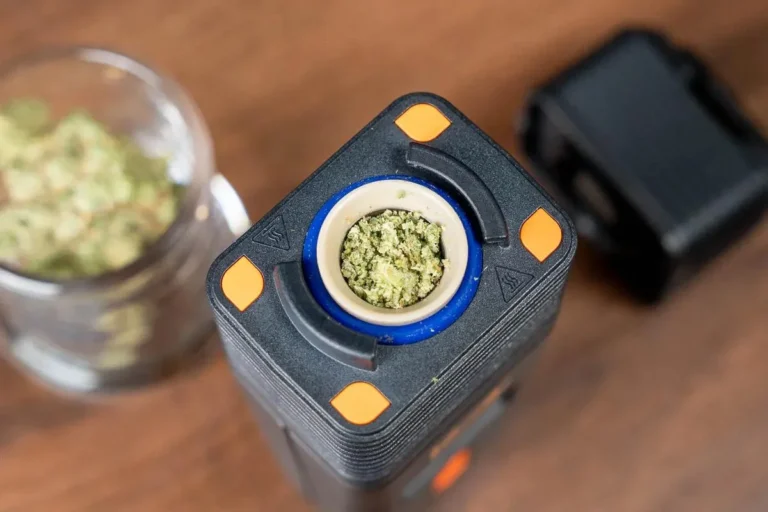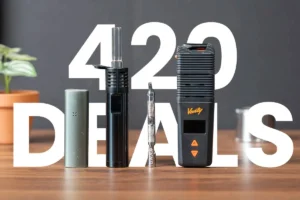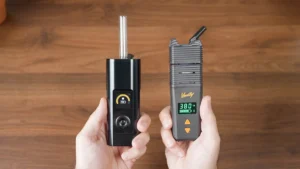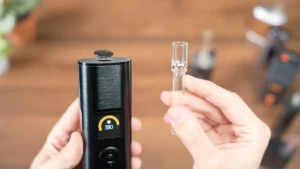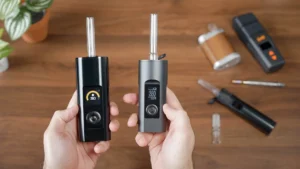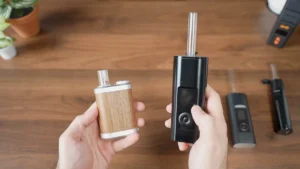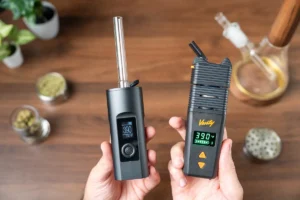Background
The essence of dry herb vapes is to heat up the flower in the chamber in a controlled way. Typically to a temperature between 350-400°F. This boils the oil of the plant, which contains the cannabinoids, aka the “potency molecules,” and the terpenes, which are the “flavor molecules.” These compounds are released from the plant's fiber in the form of an inhalable vapor, which is not only better for your health but also much tastier when compared to traditional smoking.
Dry herb vapes use one of two heating methods to transfer heat into that plant- conduction or convection.
Conduction vaporizers
Conduction vaporizers, such as the Pax, transfer heat by contact. The walls of the chamber get hot, and that heat radiates into the herb. As you may expect, the herb that is closest to the heat source, which is the chamber's walls, gets instant and intense heat. The herb in the center of the bowl doesn't come in contact with the heat source and is “baked” over time, usually in a 4-6 minute session. Hence the name- “session vaporizers.”
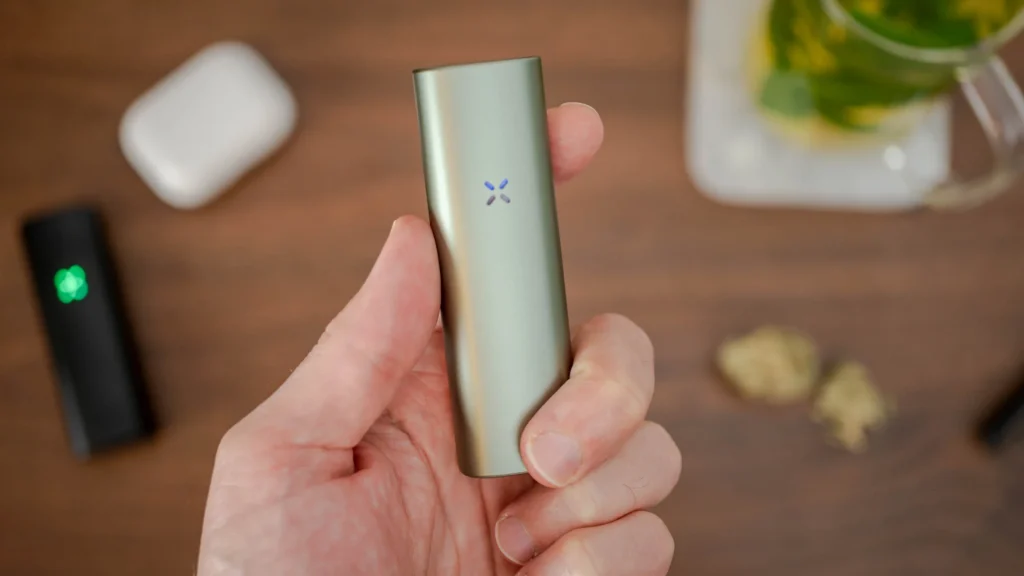
During that session, the herb in the chamber stays hot, and at the end of the session, the herb is cashed and needs to be discarded. Keep in mind that even if you turn the vape off halfway through the session, there is still residual heat in the chamber, which will keep “baking” the herb. If you try another session with the same herb, you'll have degraded flavor and decreased potency.
Related: When to replace herb in Vaporizer Oven?
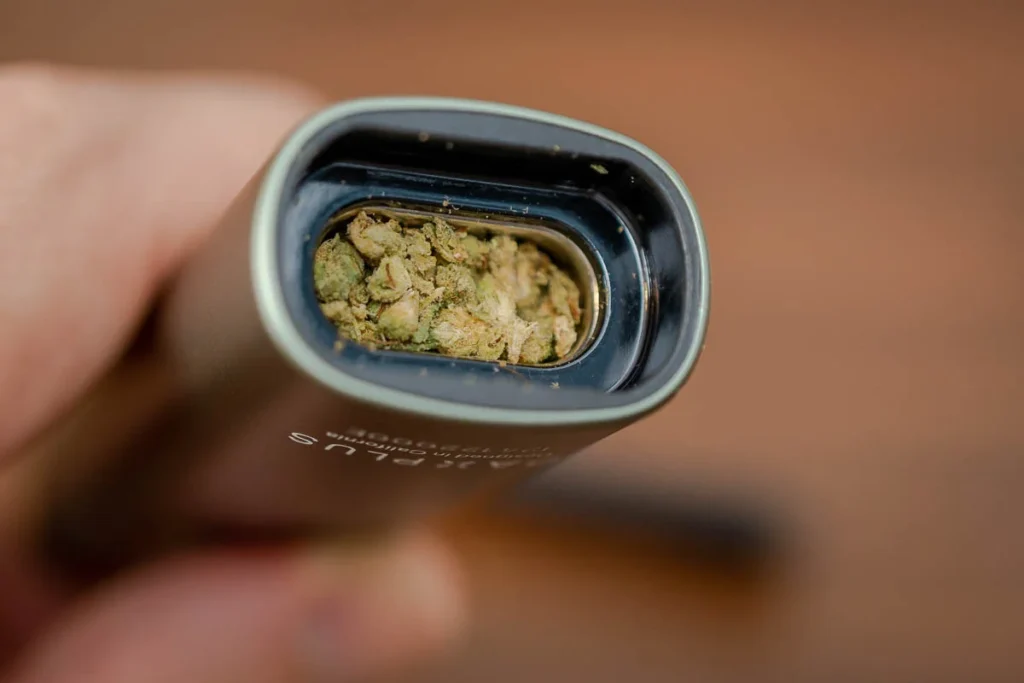
When packing a bowl for a conduction vape, you want to pack it pretty tight. Since the heat is transferred by contact, you want to minimize air pockets between the herb particles to allow for efficient heat transfer.
Convection Vaporizers
Convection vapes, on the other hand, separate the heating element from the chamber. So, instead of the chamber walls getting hot, the heat is created and stored away from the chamber. Then, the heat is pulled in through the chamber with each inhale, heating the herb with hot air and extracting vapor.
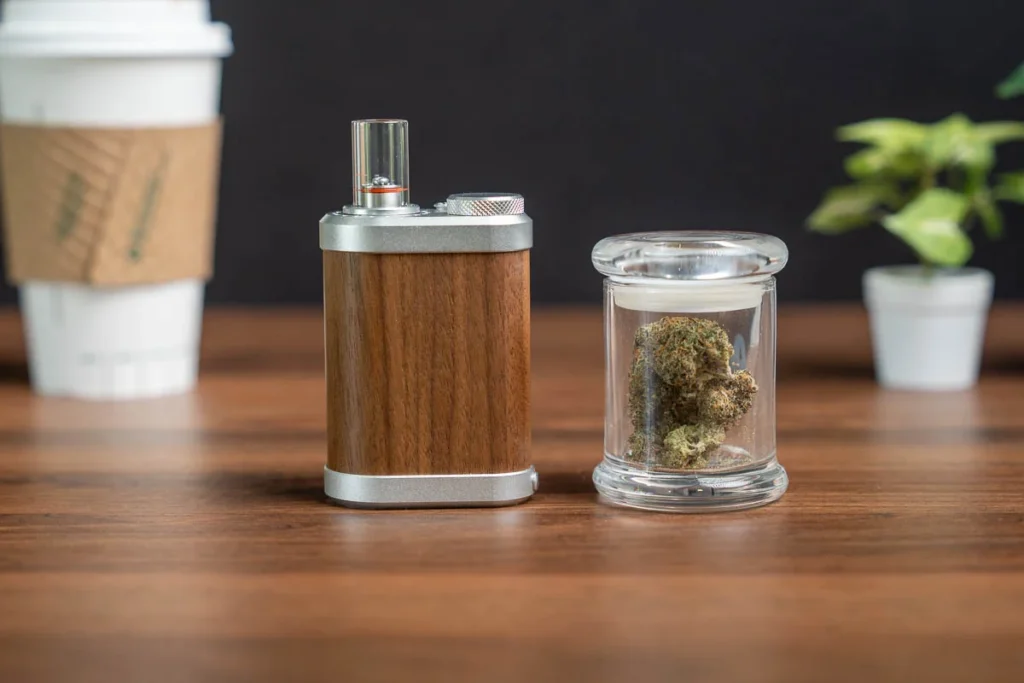
With convection vapes, the herb is not being “baked” in between inhales. With “pure convection” vapes like the Tinymight 2 here, if you're not inhaling, the herb is not getting any heat at all. The chamber goes from cool to hot and back to cool in the duration of the inhale, which is around 10 seconds for the average user. So, each inhale is its own “mini session,” or in other words- you can inhale on demand.
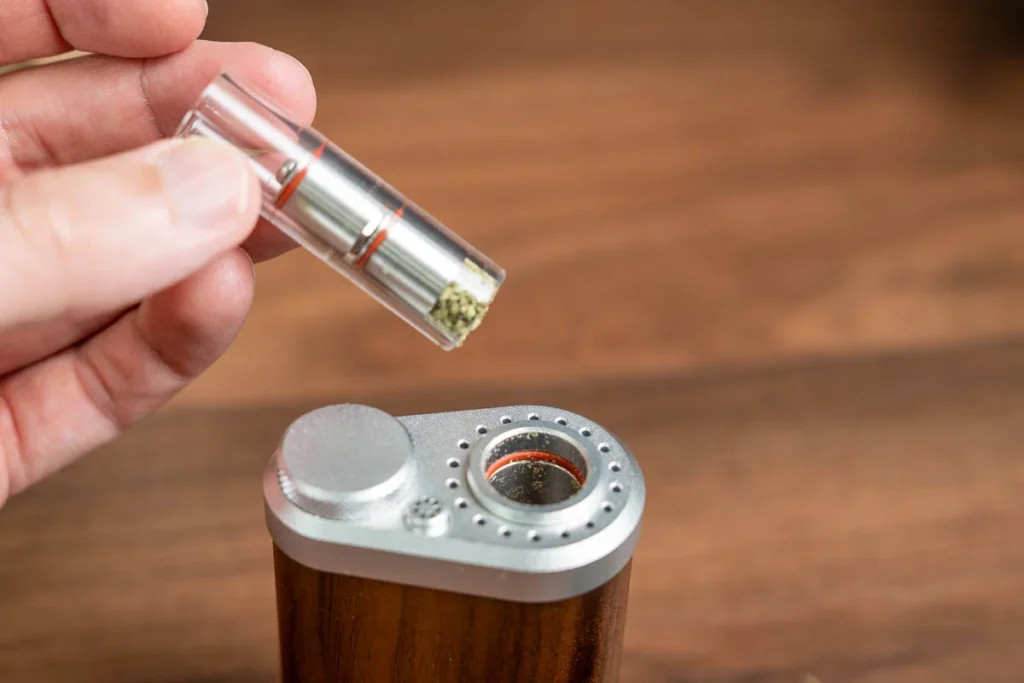
When packing a bowl of a convection vape, you should pack a full but fluff chamber. Since the herb is heated with hot air, more surface area means better efficiency and extraction.
So which is best?
That may get you thinking- on-demand is the way to go! Right? Hmm, not so fast. There is a reason why 90% of portables out there are session vapes.
- First, convection vapes have a learning curve. They take some tinkering around to achieve good results. The packing and inhaling techniques take time to master. Vs. the super easy-to-use conduction vapes.
- Second, they can be more expensive, larger, and more fragile than conduction vapes. An example here is the Pax, which retails for less than $200, is tiny and is very durable. Compare that with the Tinymight, which retails for $350 and is pretty large and fragile.
- Third, and that one may seem counterintuitive- most users prefer them, even if they don't realize it.
Think about it for a second, which option do you prefer-
A) Ripping a bowl in one or two hits, feel like you got hit by a train, and then the whole session is over in less than 20 seconds?
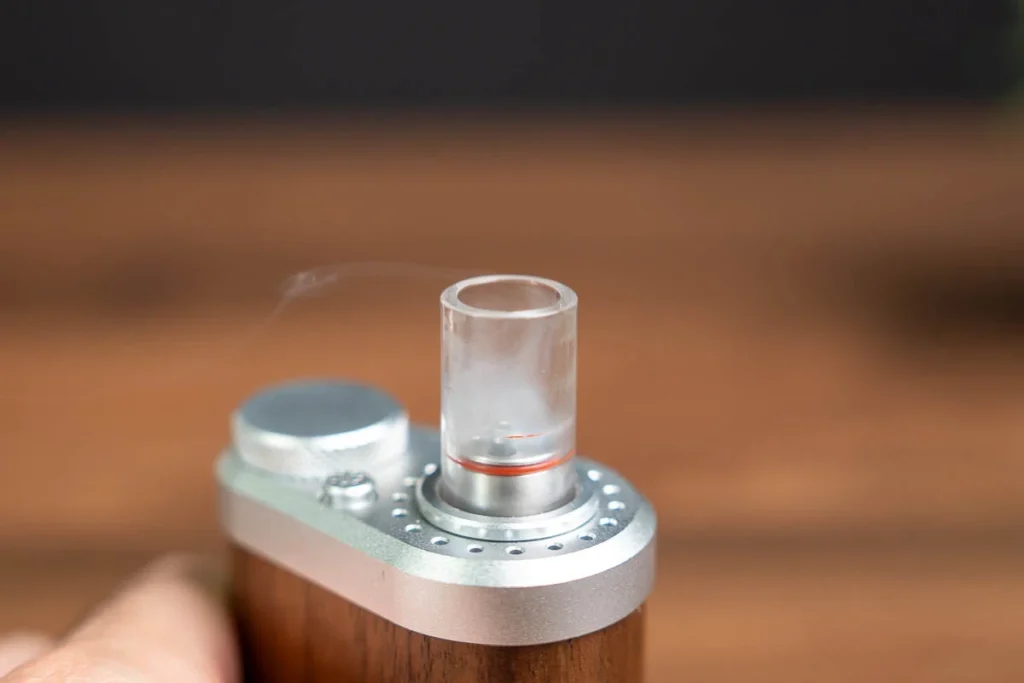

Or B) Slowly vape a bowl in a 5-minute session, and you can inhale as much as you want, and the onset of the effects is a little slower and milder.
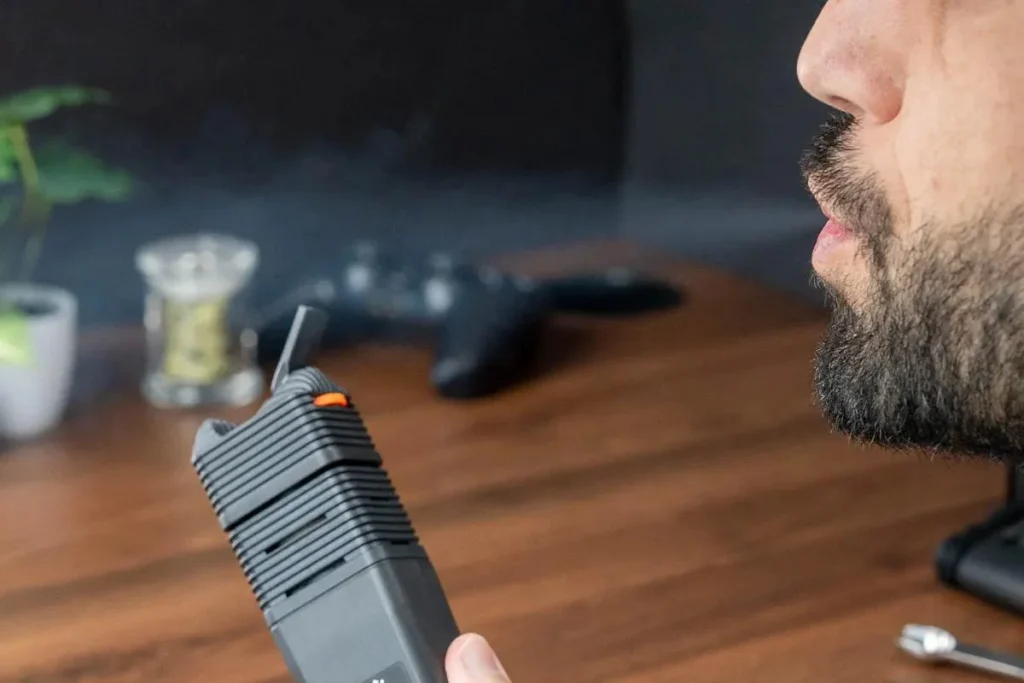
If you've been smoking for a while, you may think of option A, like hitting a bong, vs. option B, which is more like smoking a joint.
While both methods have users who swear by them, it seems as if most users, especially beginners, prefer the mild and laid-back option.
Personally, I prefer option B. I like to take my time, use a vape while I work, or while scrolling on my phone, or while watching a YouTube video. Sometimes, I'll stretch a bowl over 10 minutes, taking an average of one hit per minute.
Hybrid Vaporizers
But, opting for a session vaporizer doesn't mean that you give up all the benefits of convection. Most of the vapes in my heavy rotation are hybrids. This includes the Arizer Solo 2 MAX and the S&B Venty. Pax is pretty much the only full-conduction vape that I use regularly.
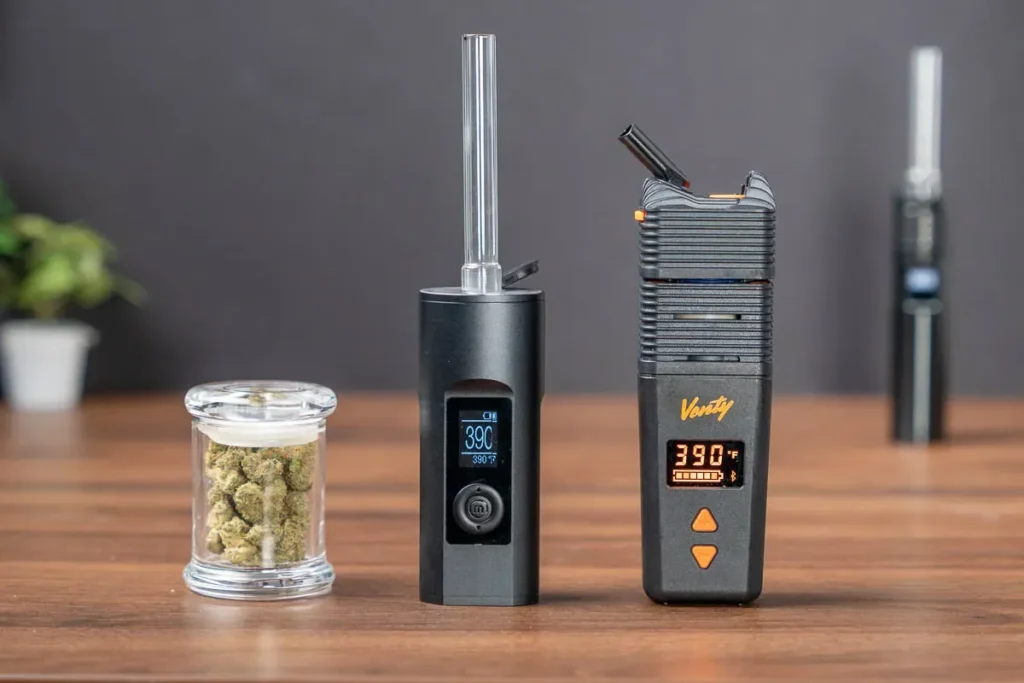
Hybrid vapes are session vapes, and they combine the best of both worlds. They “bake” the herb in the chamber over the session, plus they use hot air that's pulled in with each inhale to boost the efficiency and achieve a better extraction than any one single method.
So, if you're wondering which one is right for you, you should probably get a session hybrid vape. It is the best option for 90% of users. Check out my top-rated dry herb vaporizers of 2024 for good options.
FAQs
Is there any vape that is conduction on-deamnd?
Yes, there are on-demand vaporizers that utilize conduction heating technology. On-demand conduction vapes allow for quick heating of the material directly through surface contact, offering fast and efficient vaporization without the need for a prolonged session. These devices are designed for users seeking immediate vapor production and the convenience of taking a hit at their leisure without pre-heating times typical of session vapes.
Is convection or conduction better for vaping?
Whether convection or conduction is better for vaping depends on personal preference and specific needs. Conduction heating directly warms the material, allowing for quick vapor production and straightforward design, often resulting in a more compact and cost-effective device. Convection heating, on the other hand, passes hot air through the material, producing smoother, more evenly heated vapor and better flavor, but usually comes with a higher price tag and may require a slightly longer heat-up time.
What are the benefits of a convection vaporizer?
The benefits of a convection vaporizer include more efficient and even heating of the material, resulting in smoother, tastier vapor and potentially more efficient extraction of active compounds. Convection heating reduces the risk of combustion, offering a purer vaping experience with less irritation to the throat. These devices typically provide better flavor preservation and can handle a wider range of materials, including dry herbs and concentrates, more effectively.
Do convection vapes smell less?
Convection vapes tend to smell less compared to their conduction counterparts. This is because convection heating involves passing hot air through the material, vaporizing it without direct contact. This method reduces the chance of material overheating or combusting, which can produce stronger odors. While all vapes emit some smell, the more efficient and even heating of convection vapes can result in less pronounced odors, making them a more discreet option for vaporizing.
